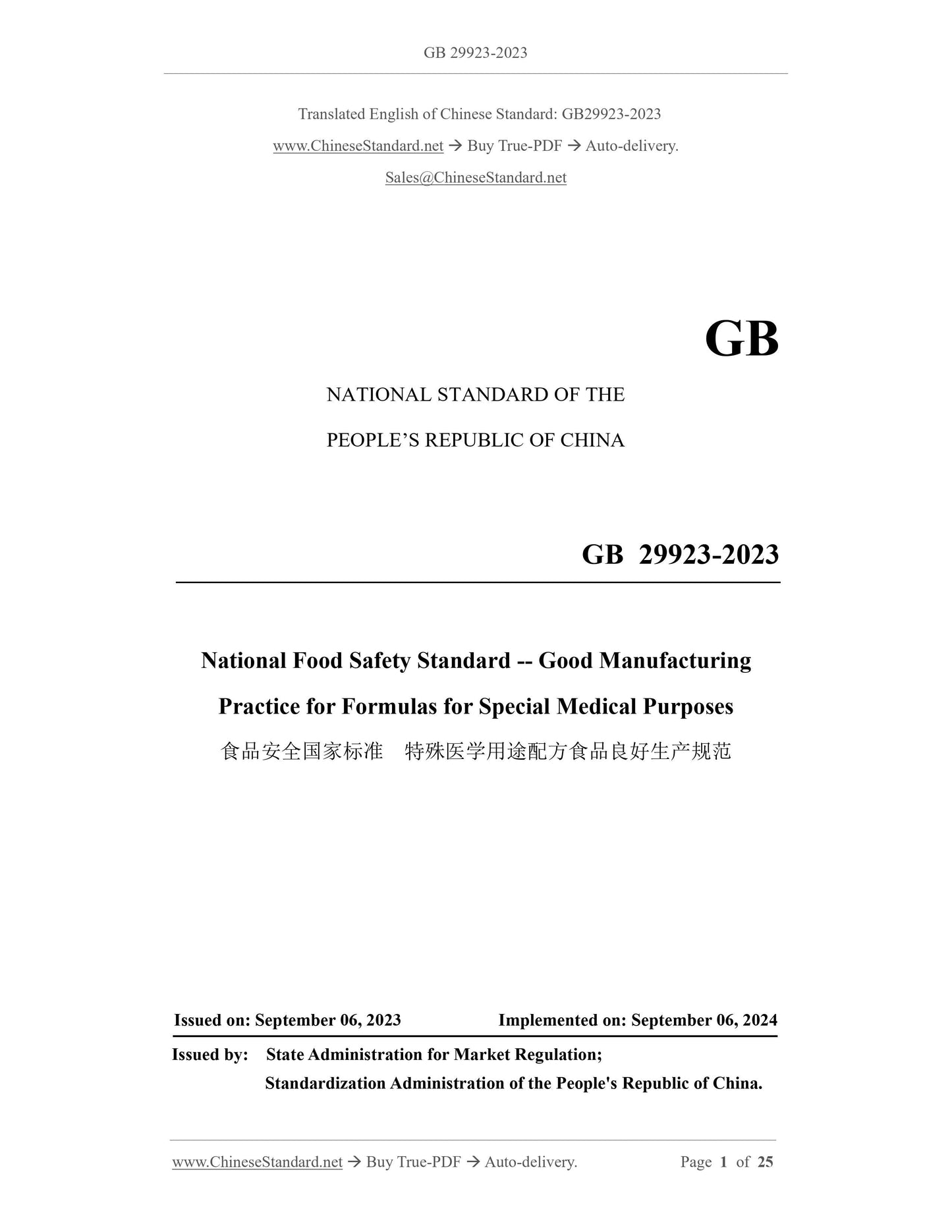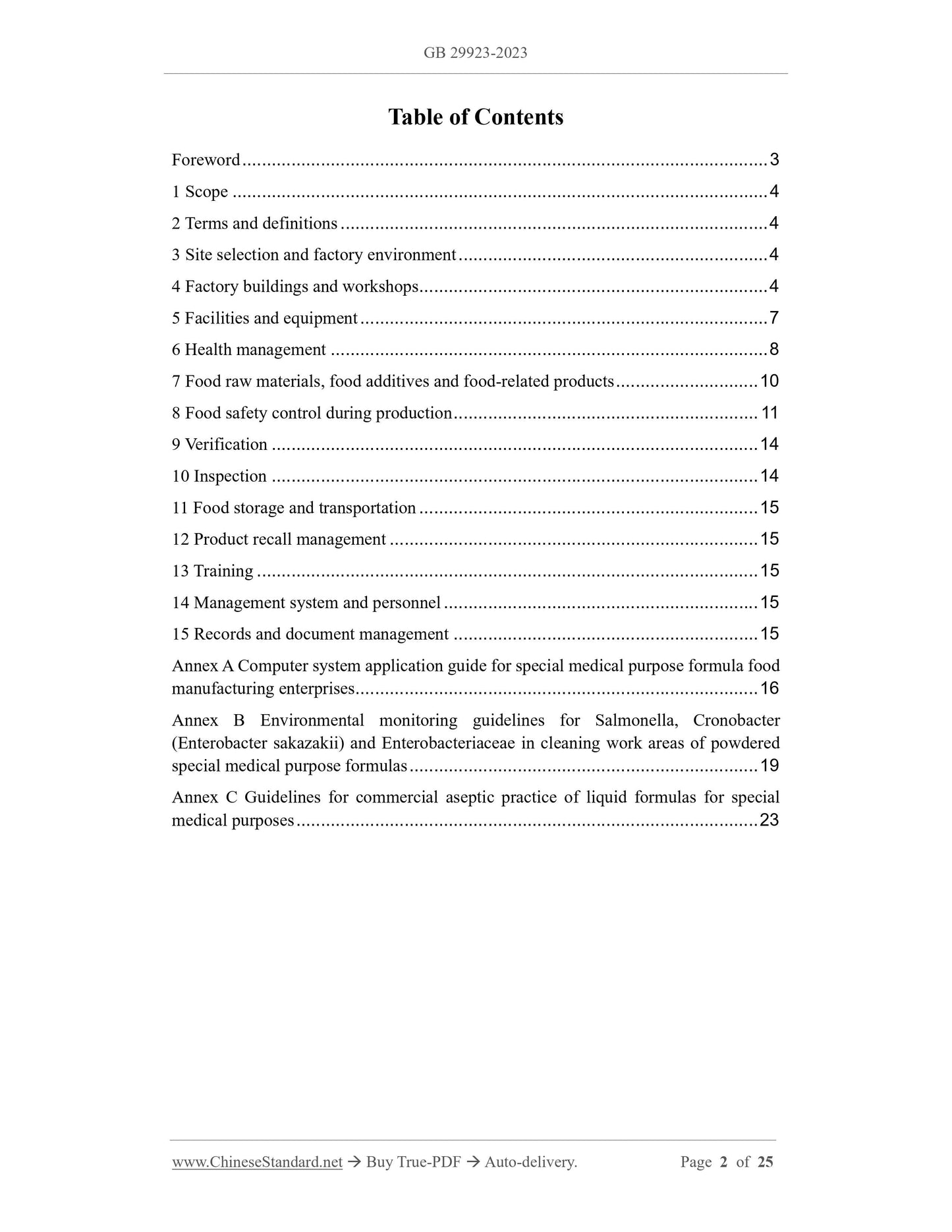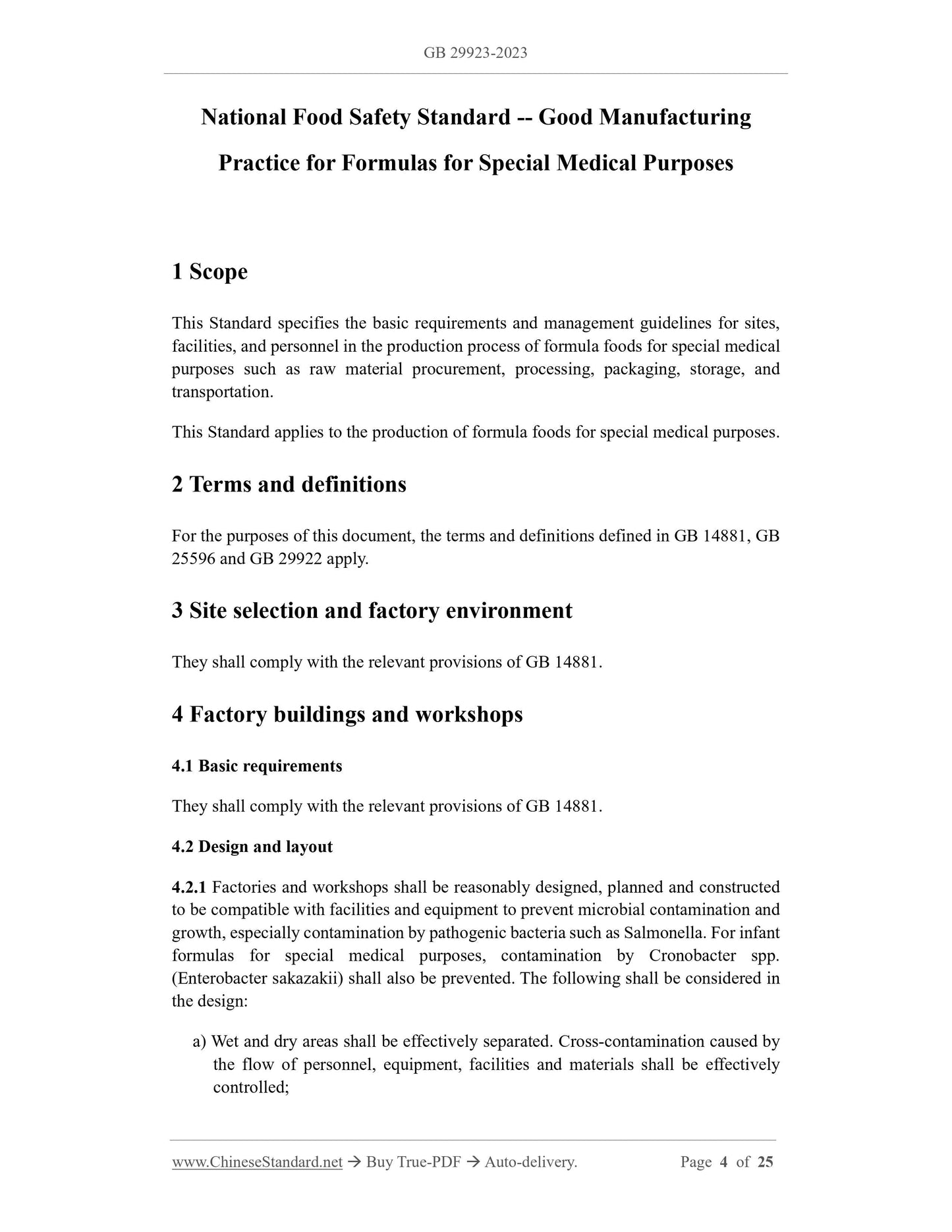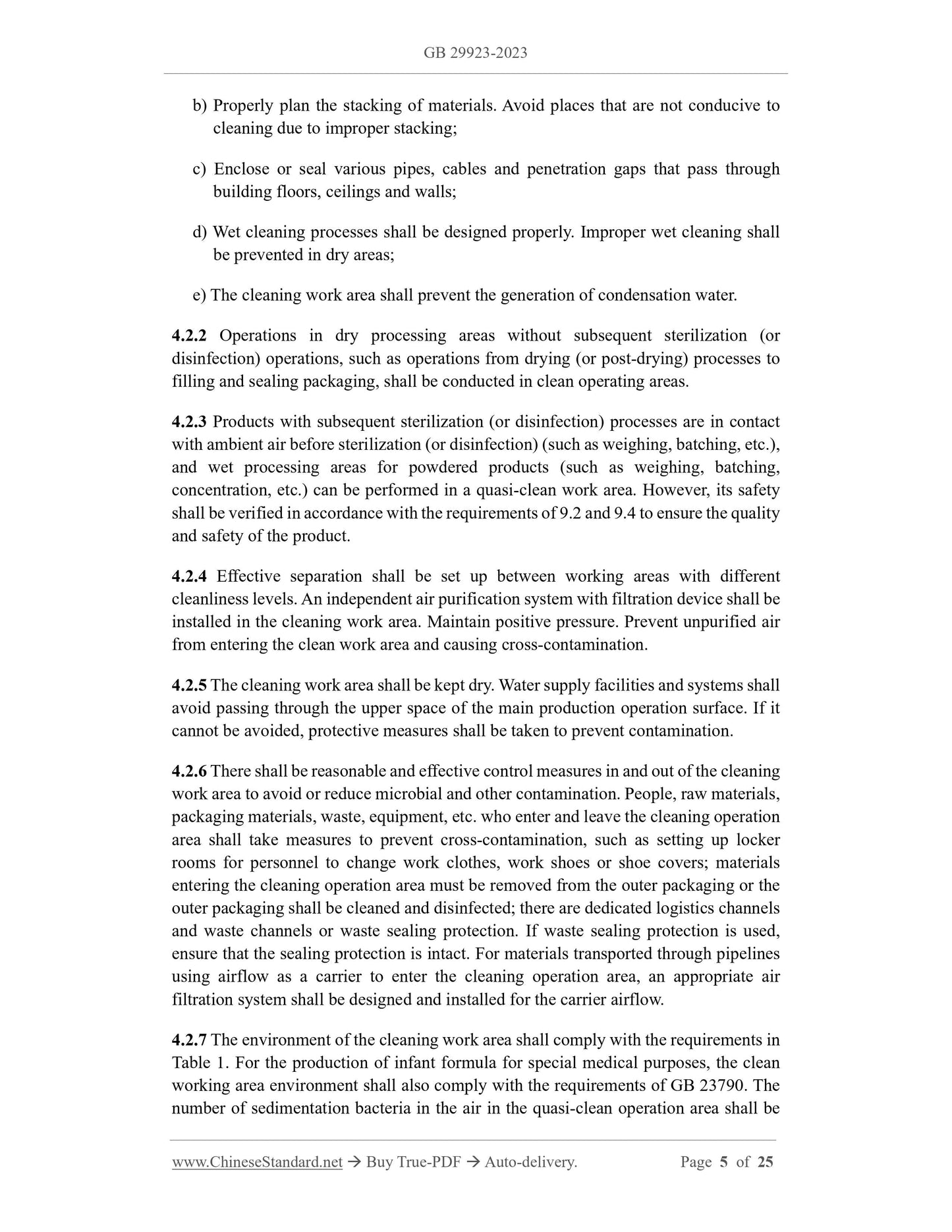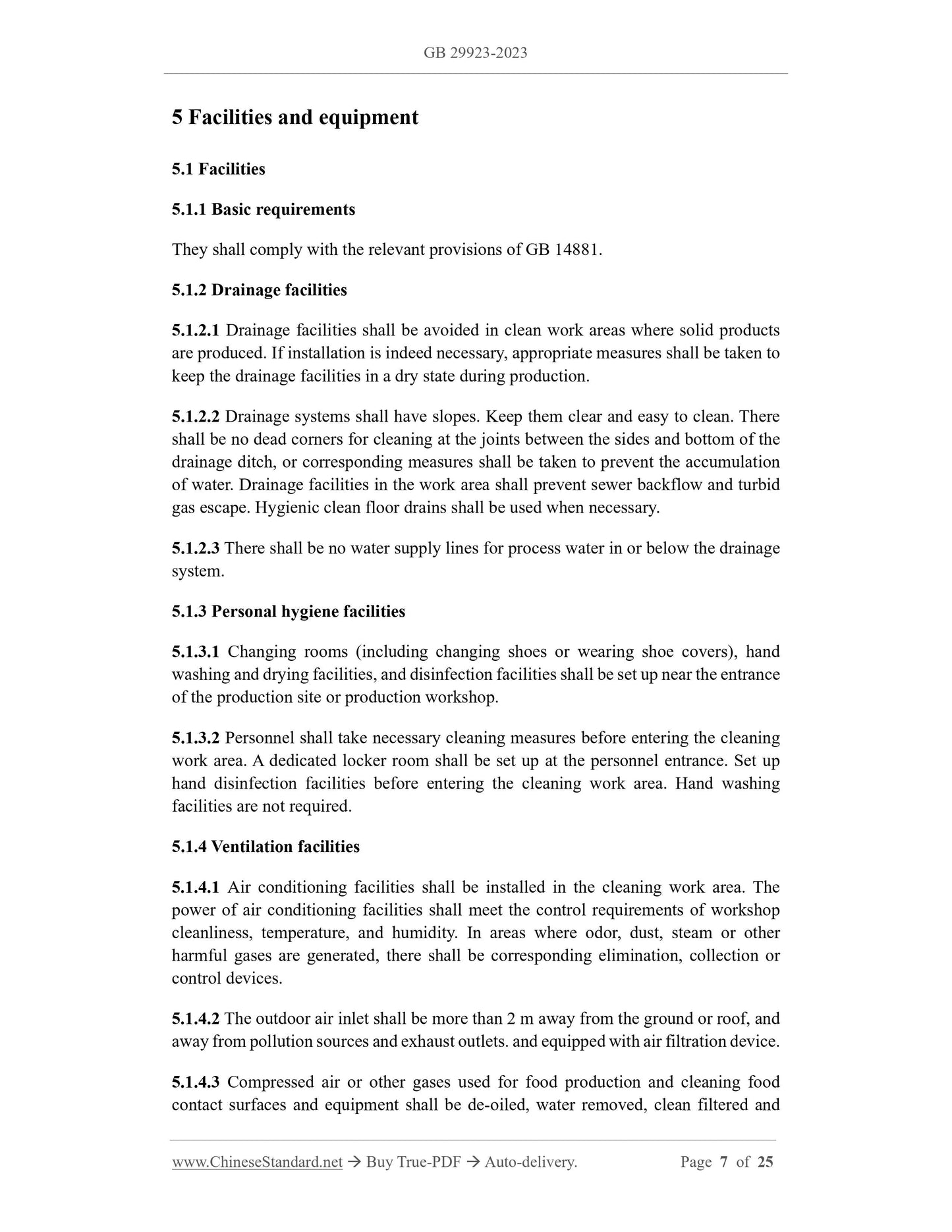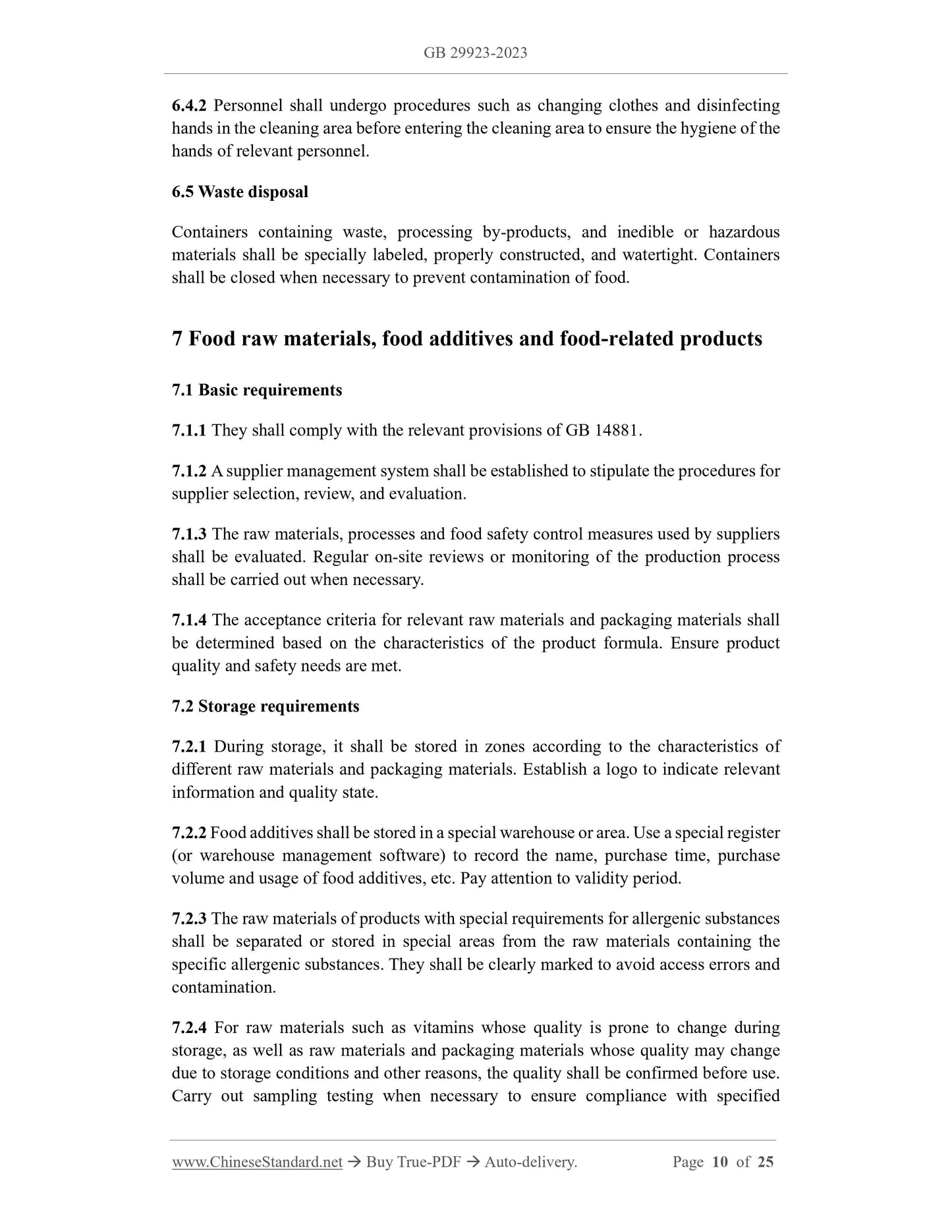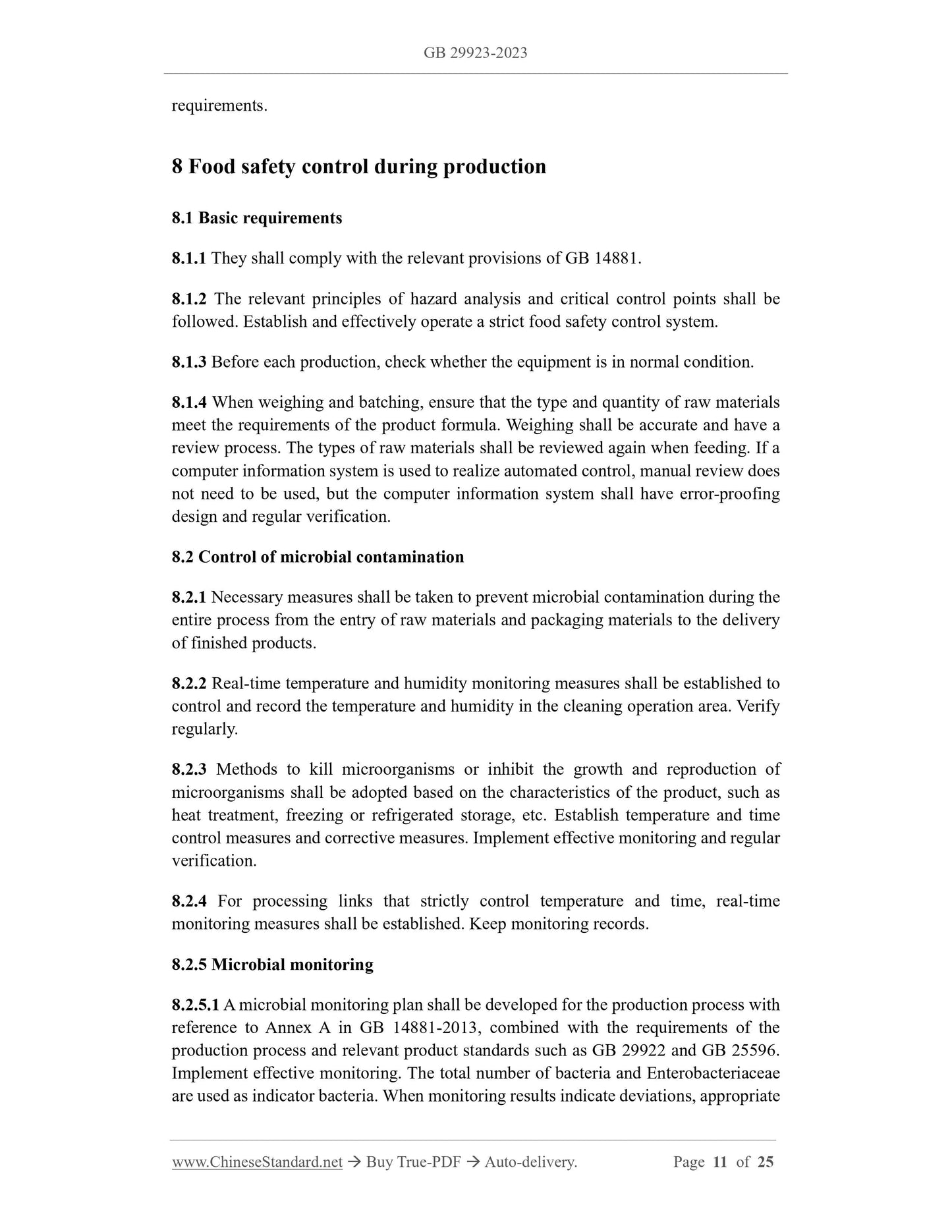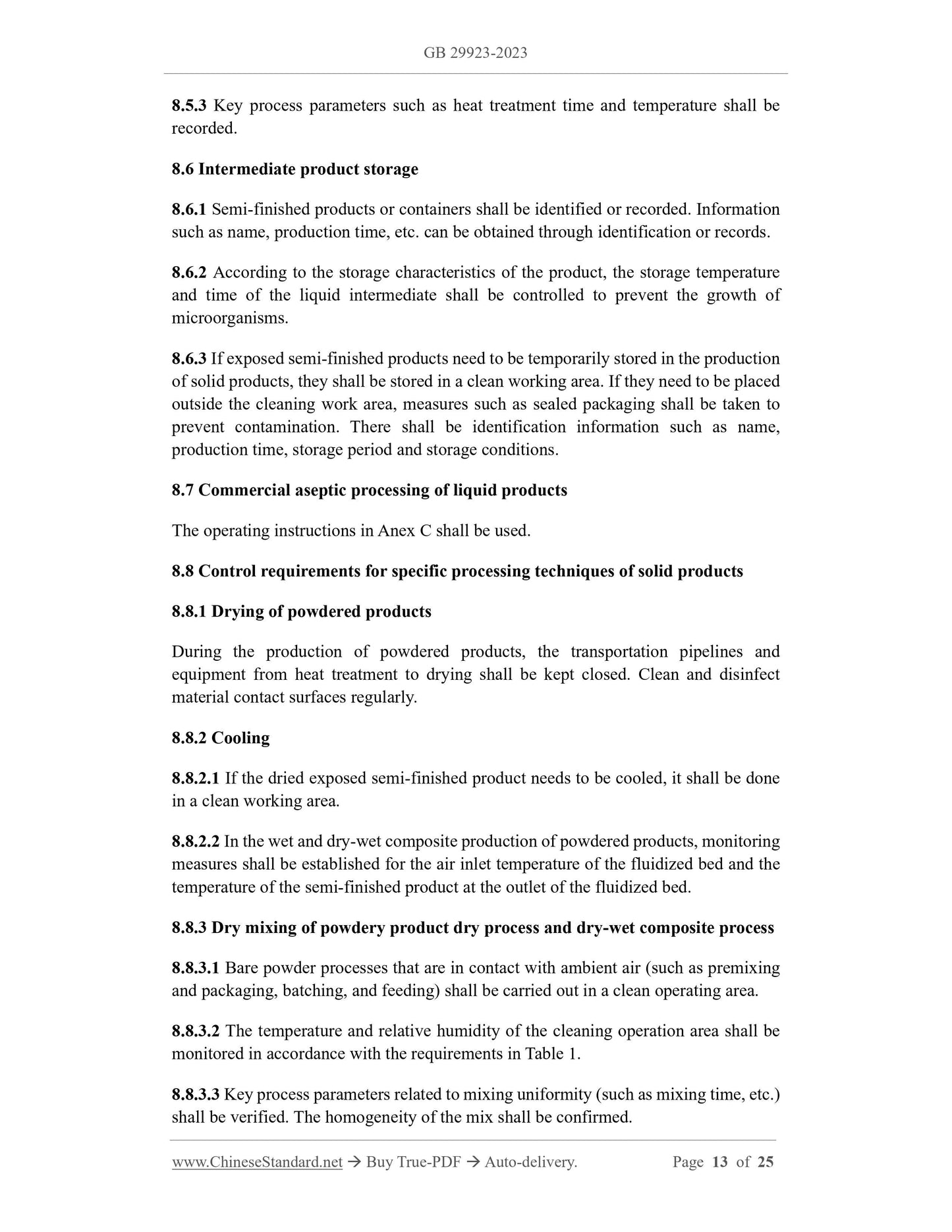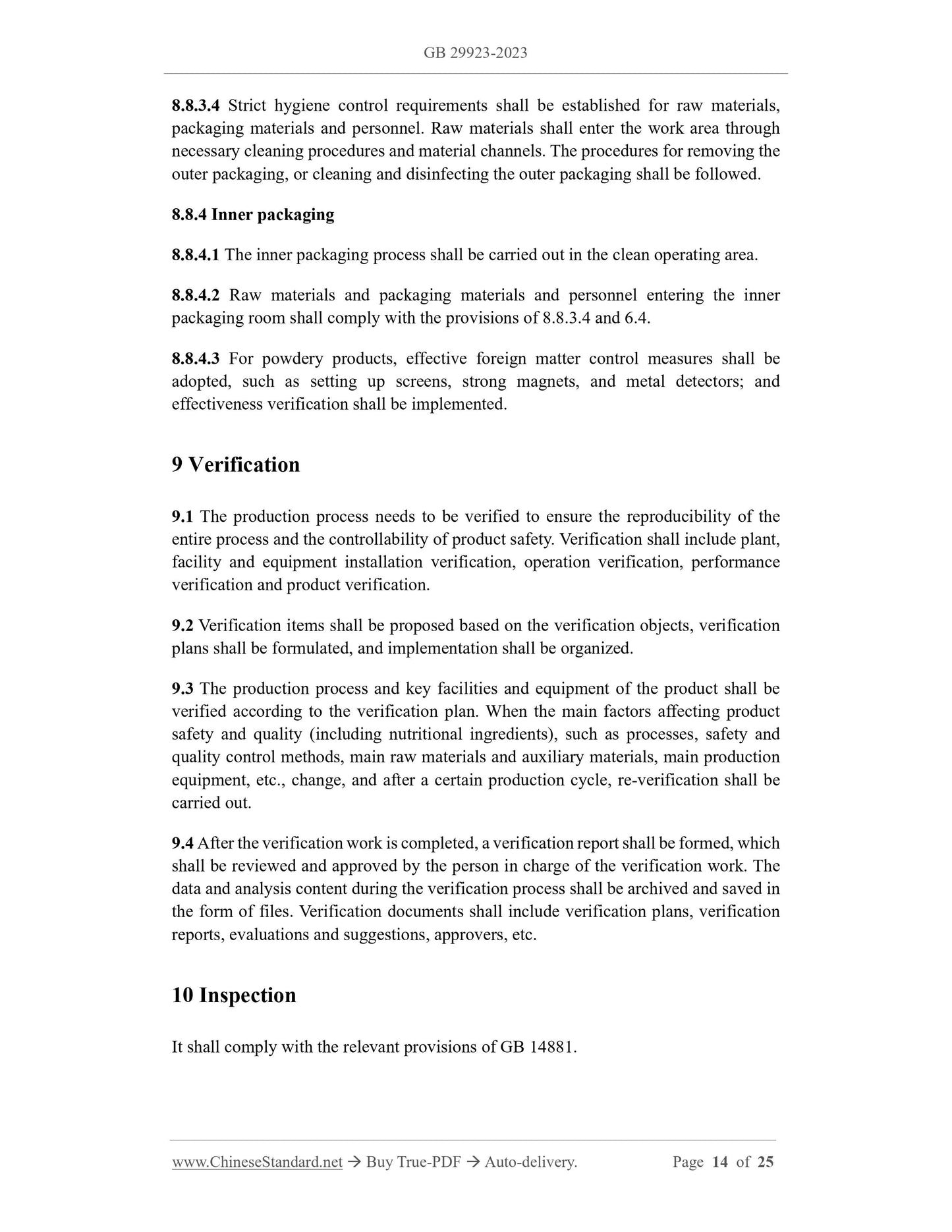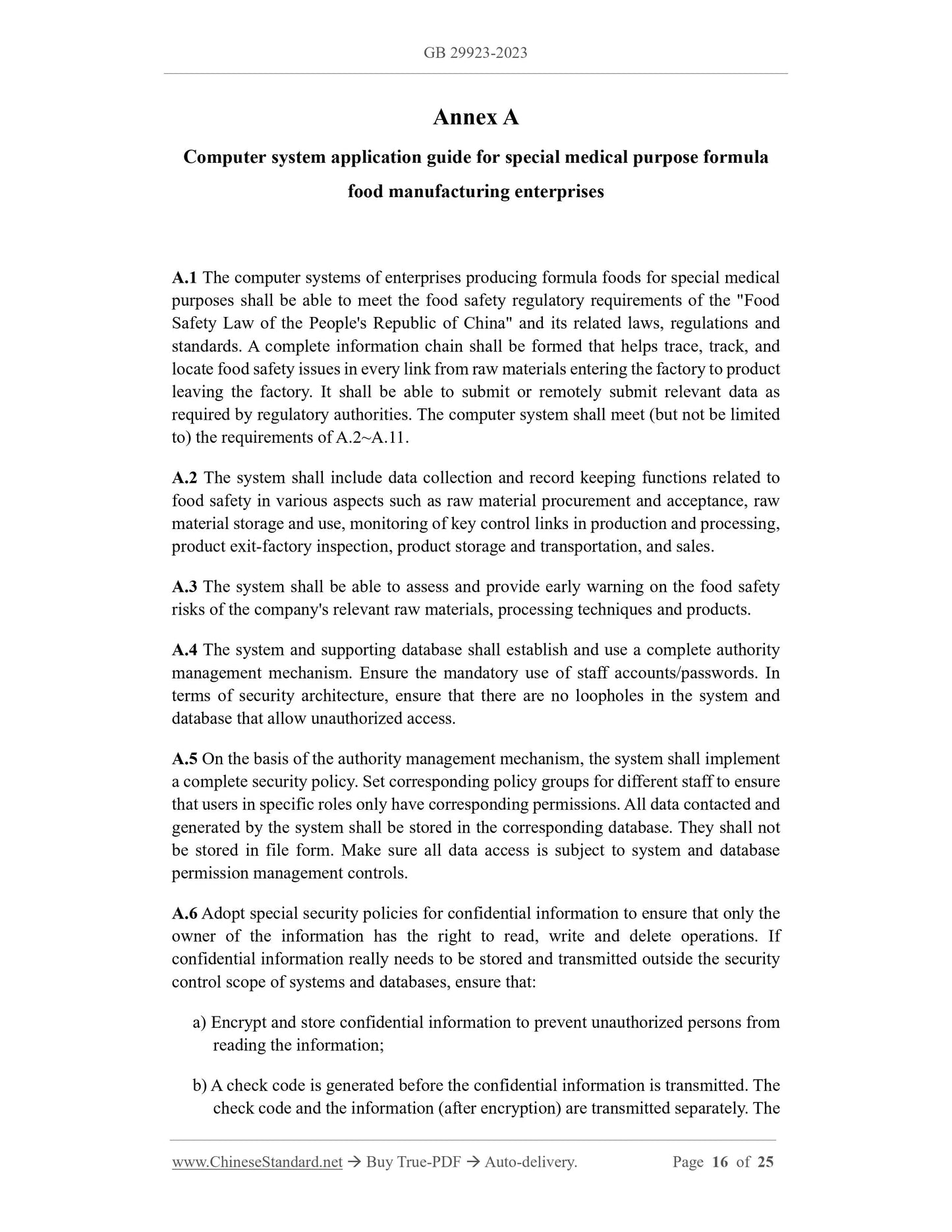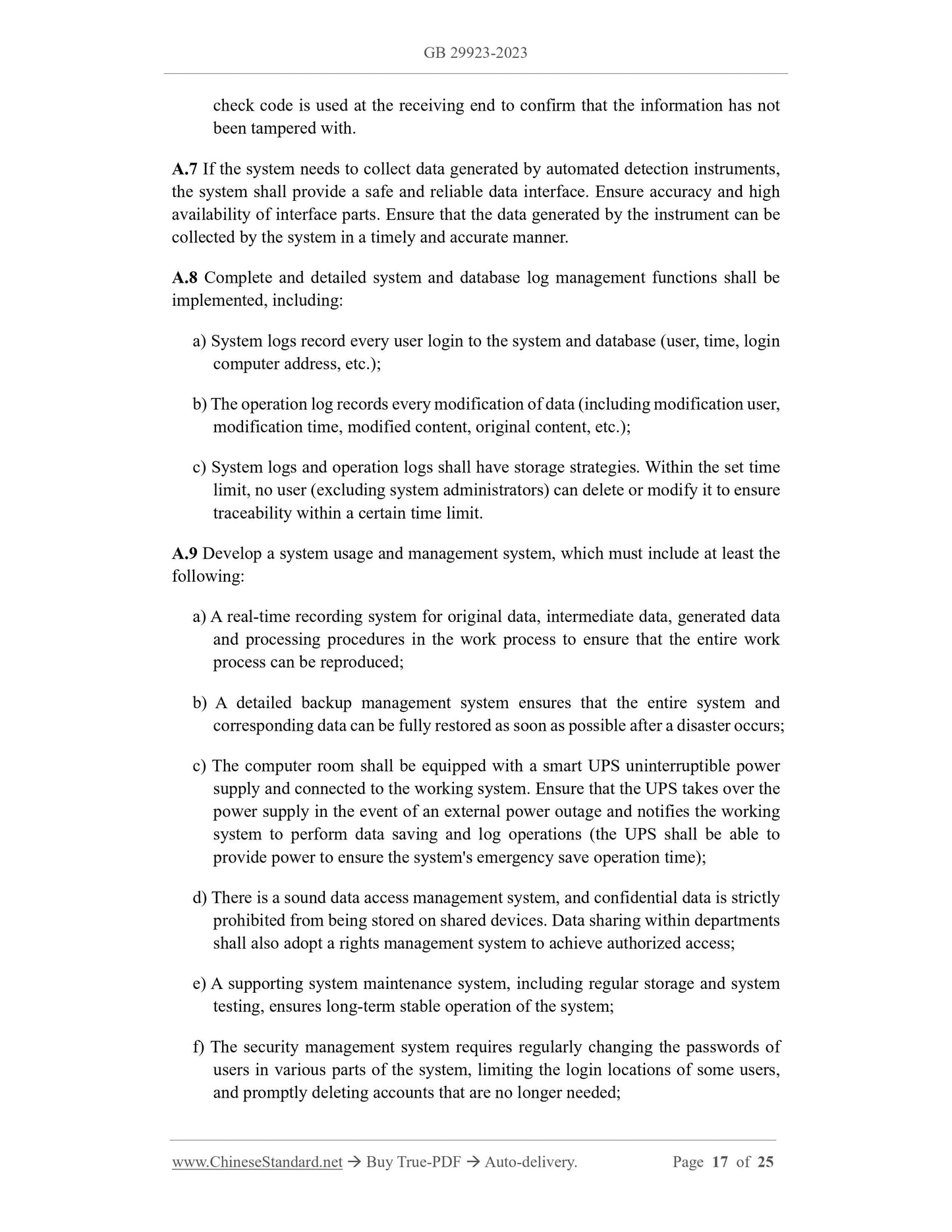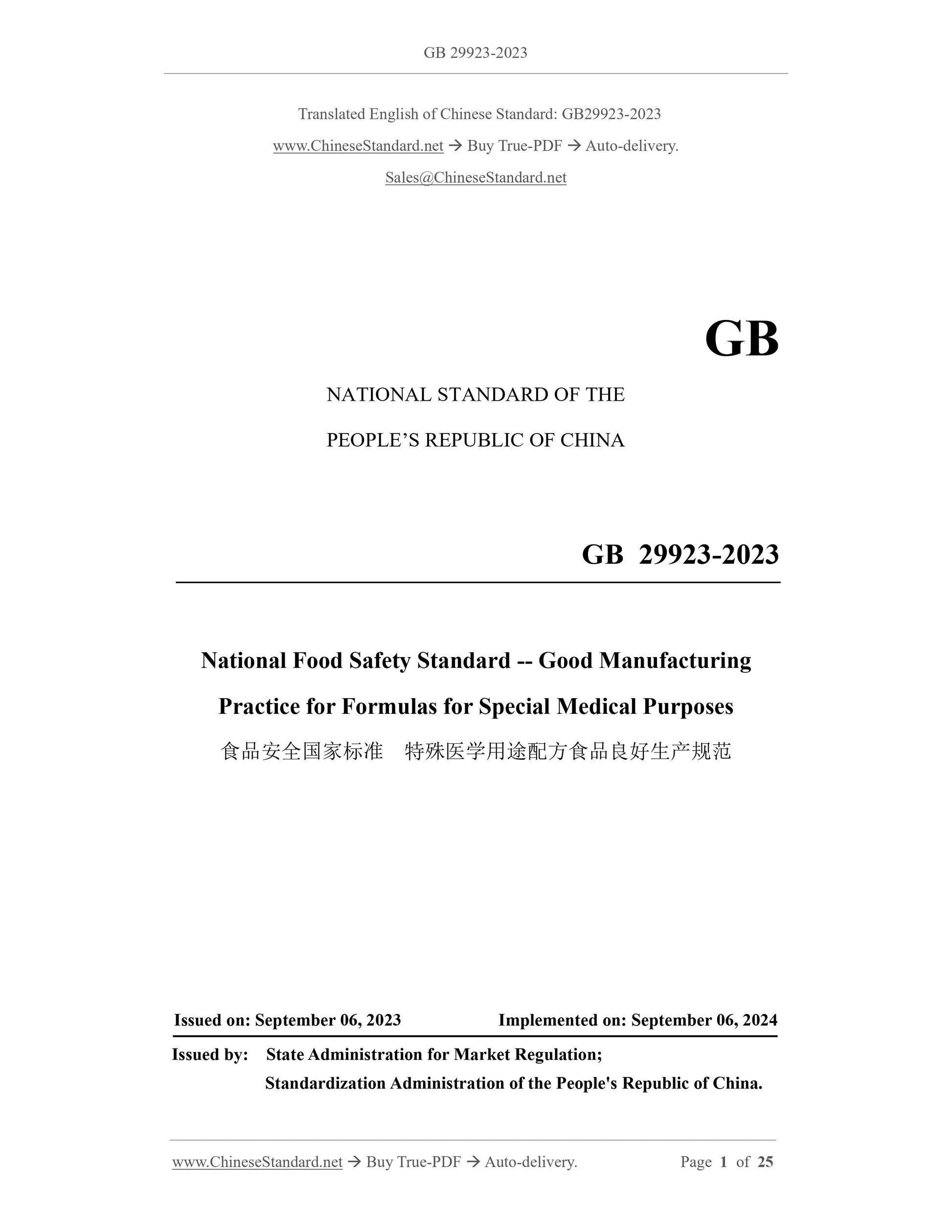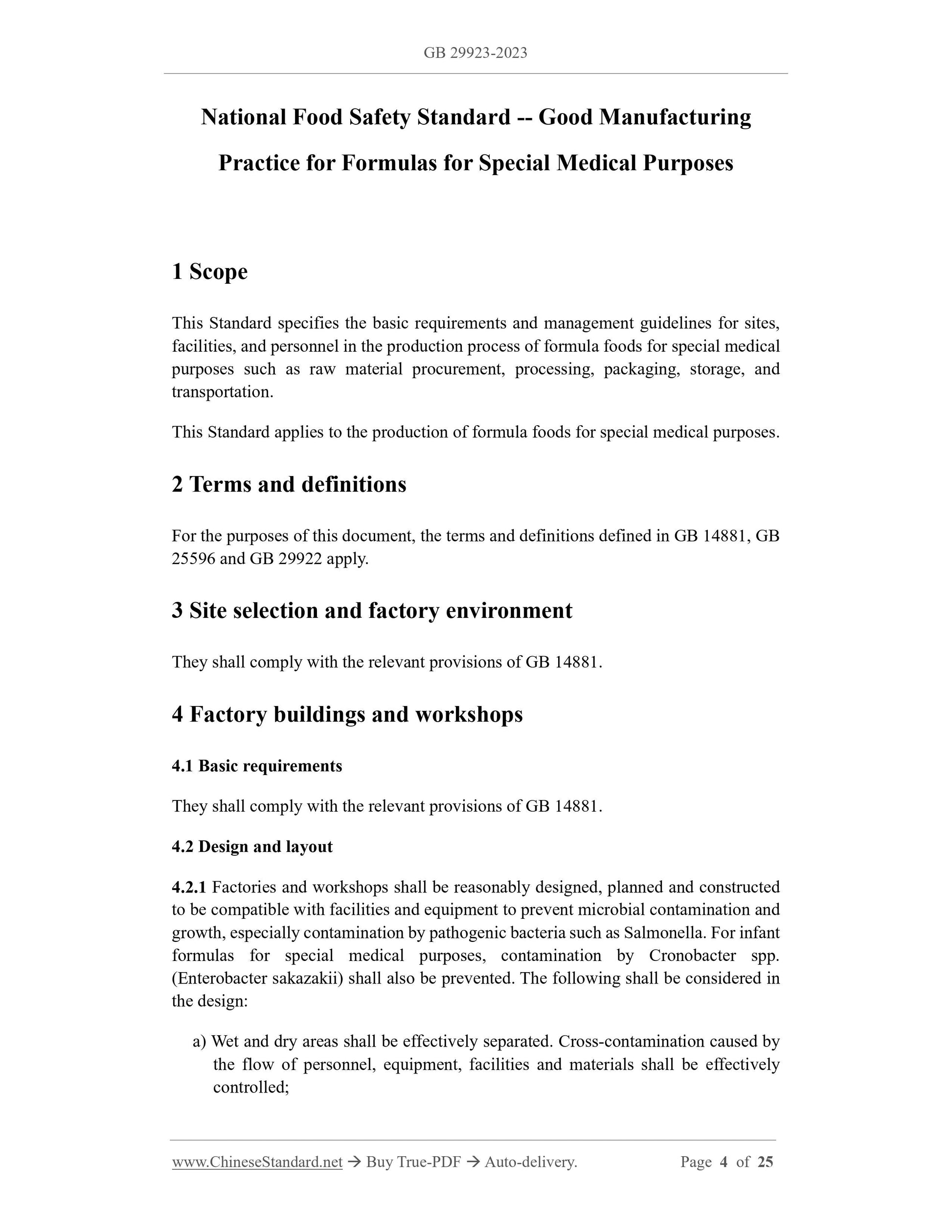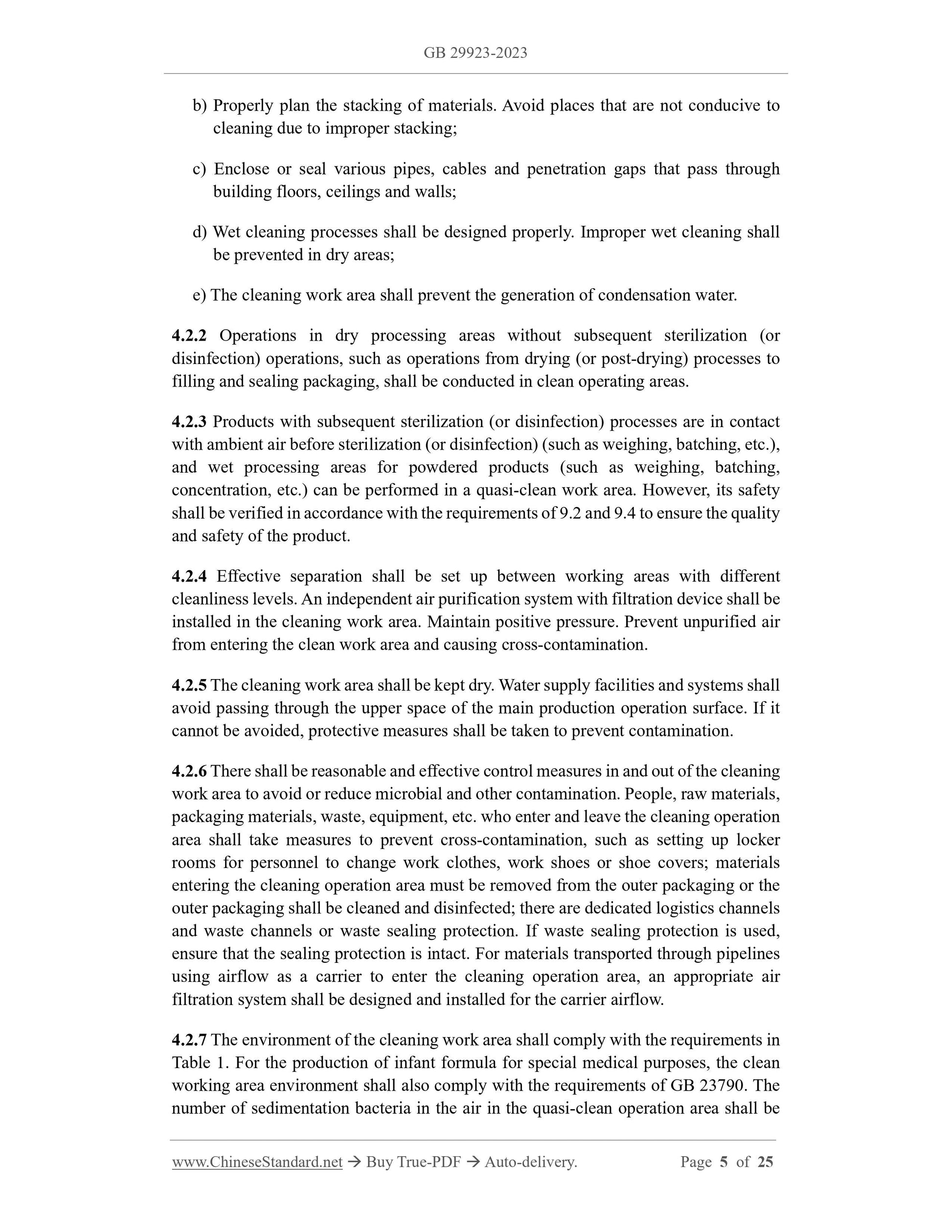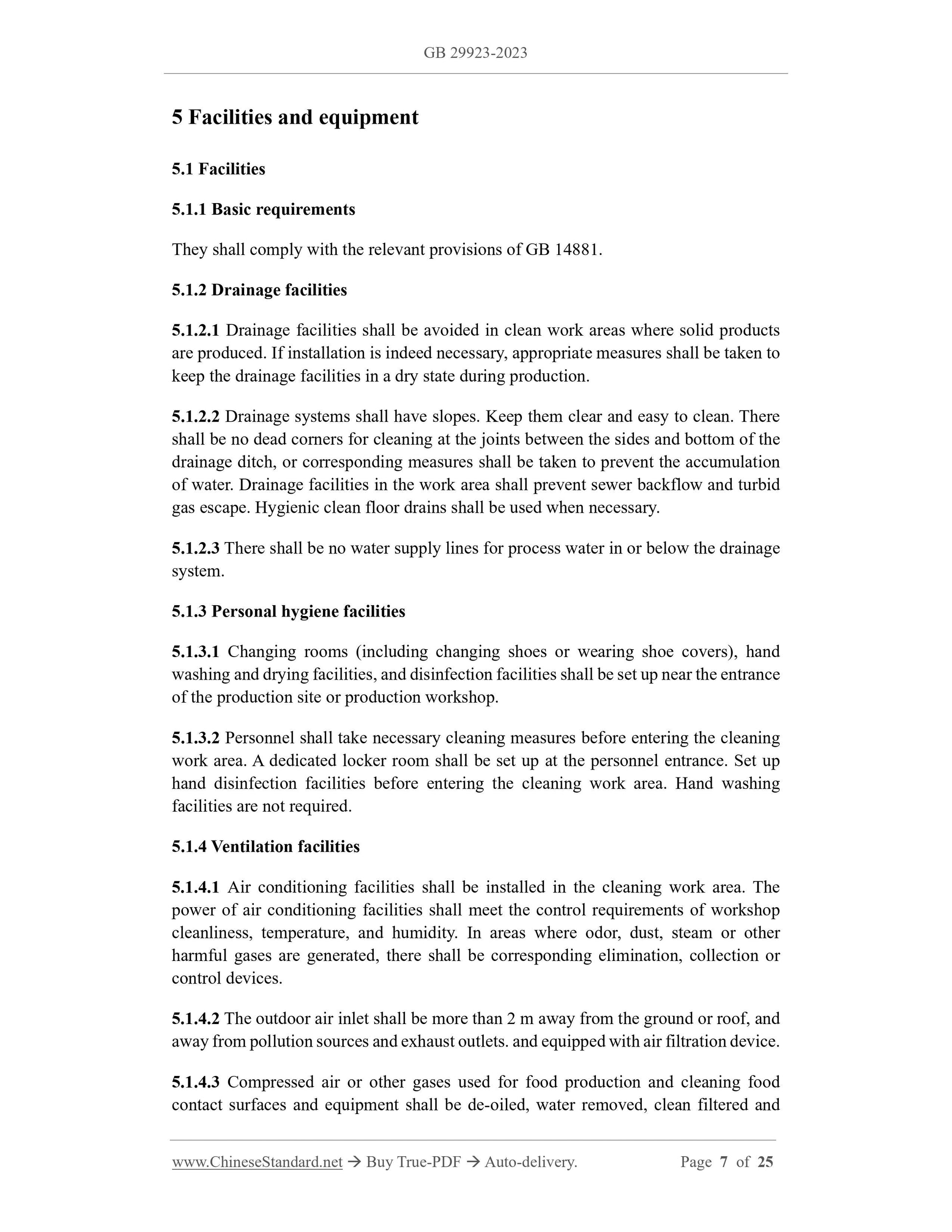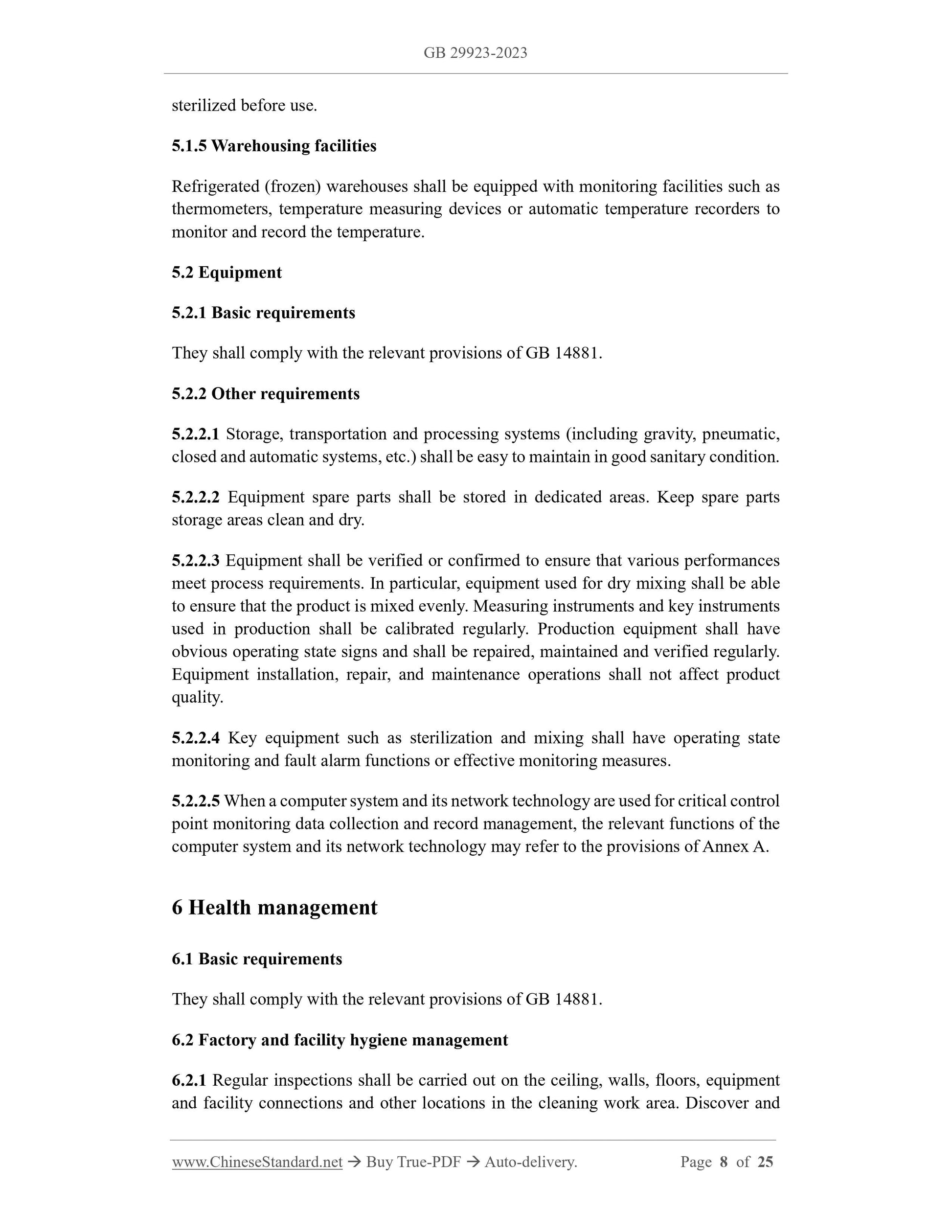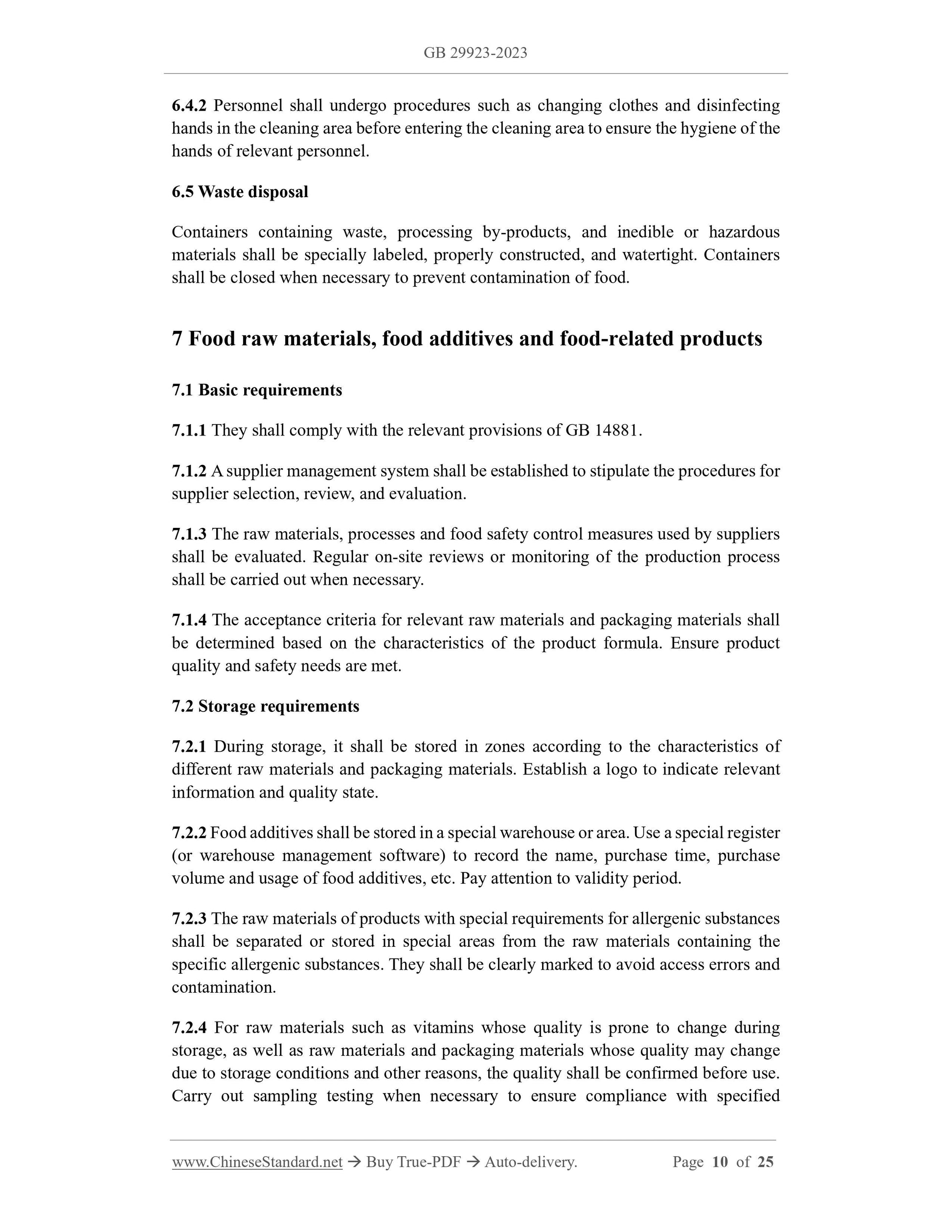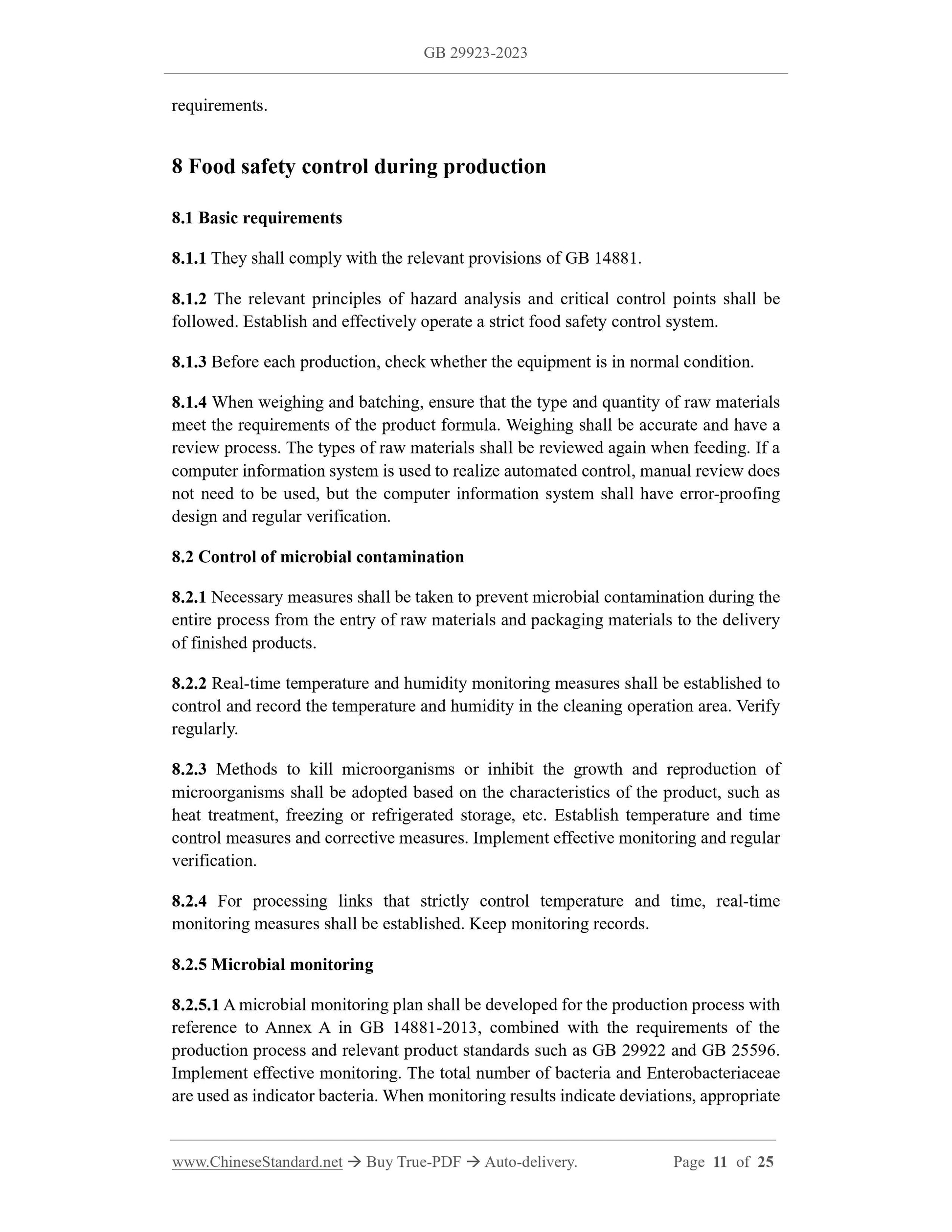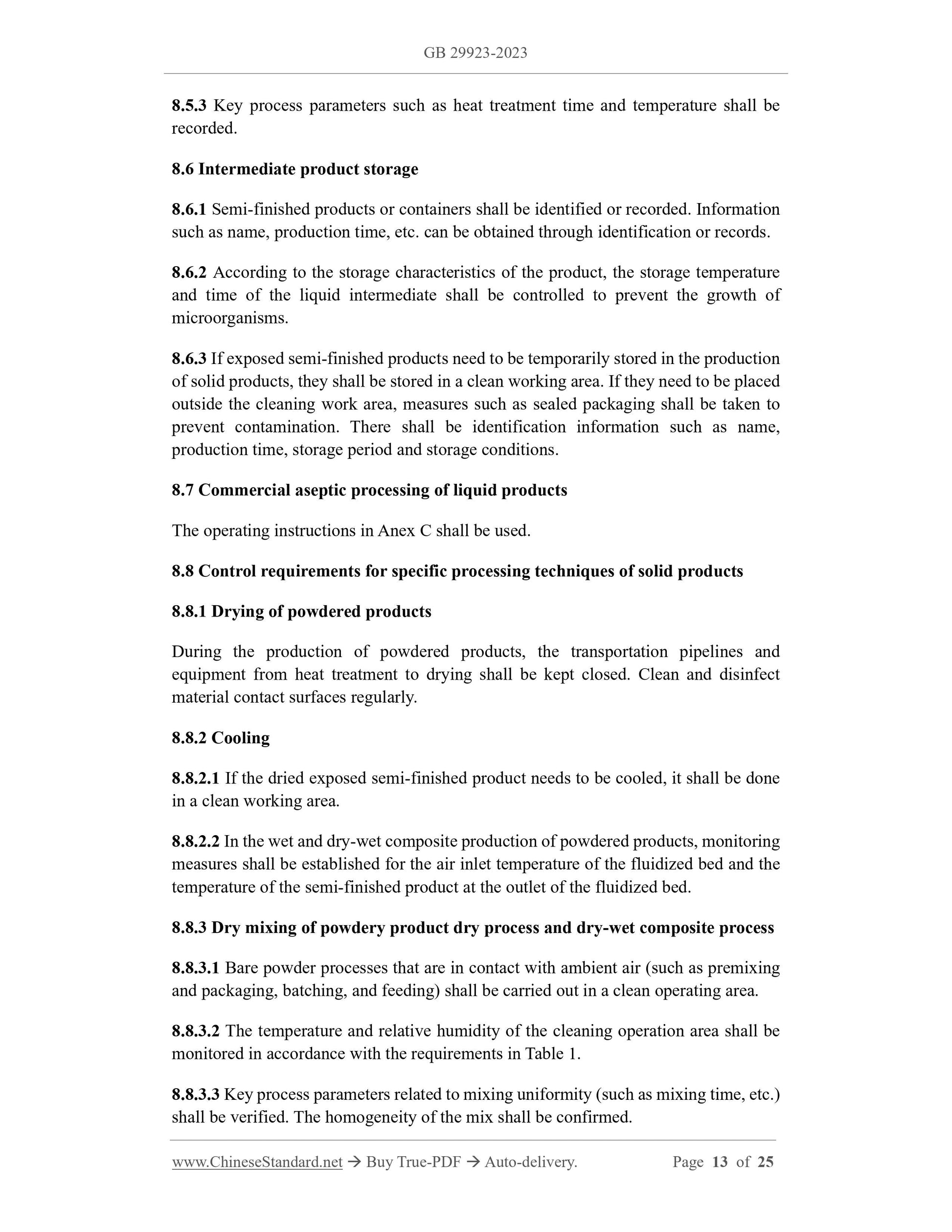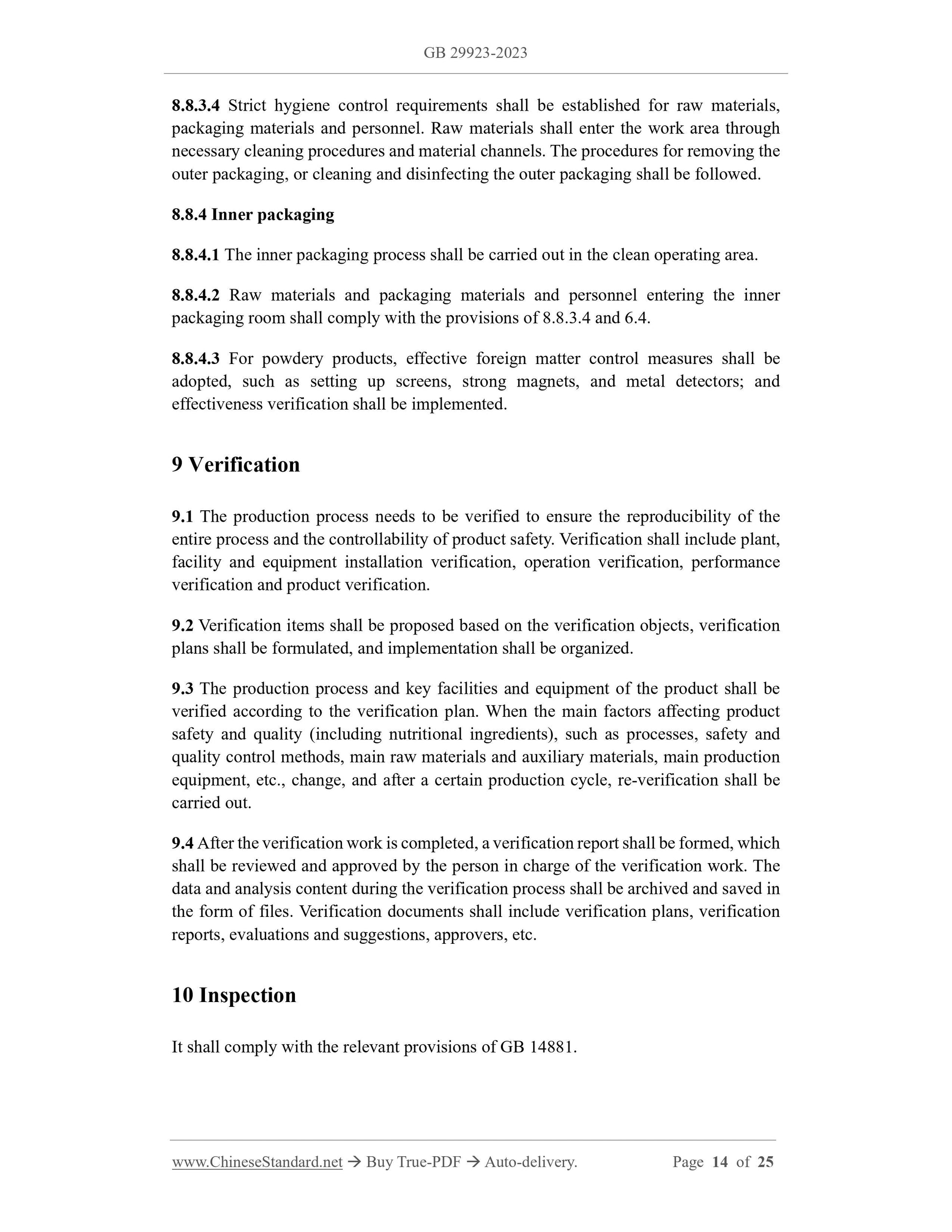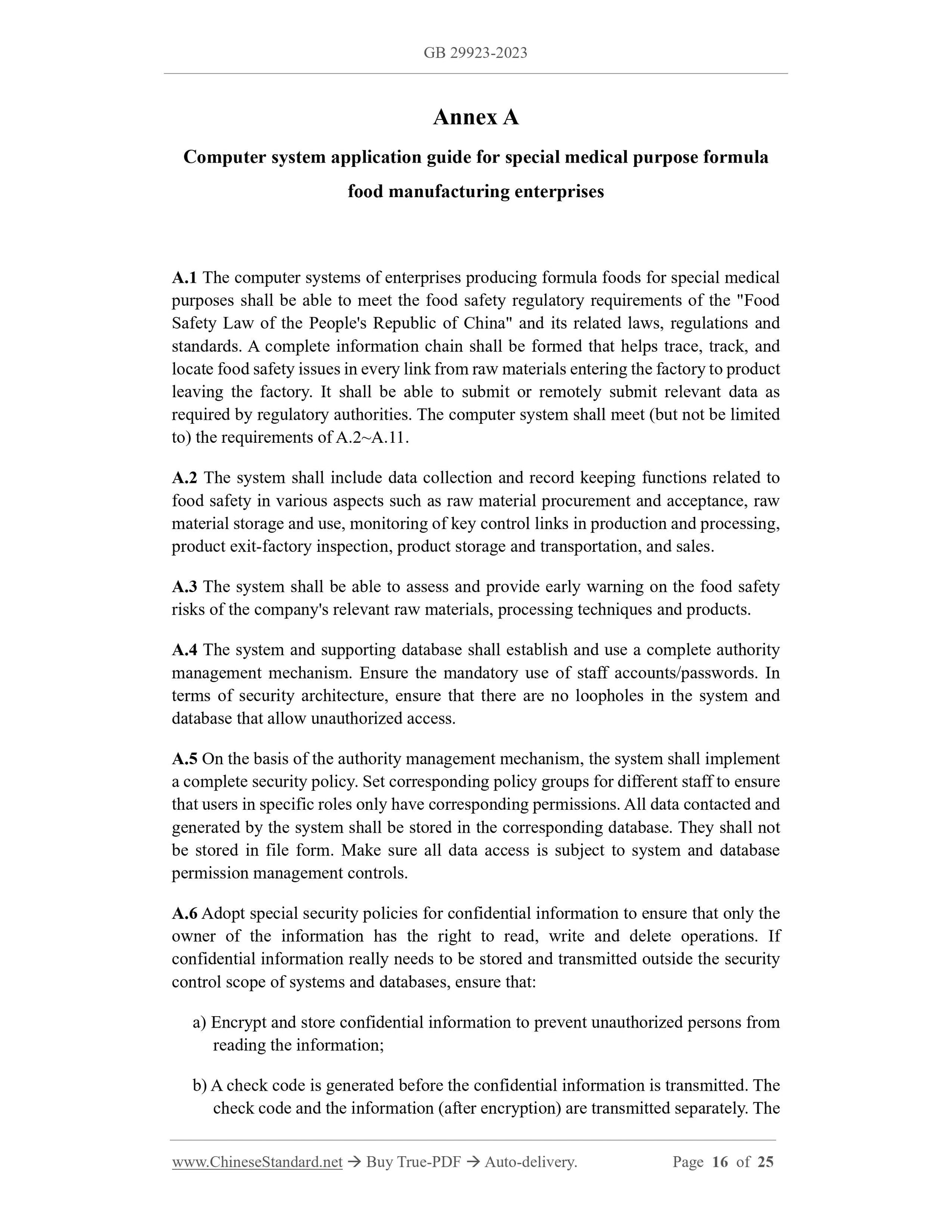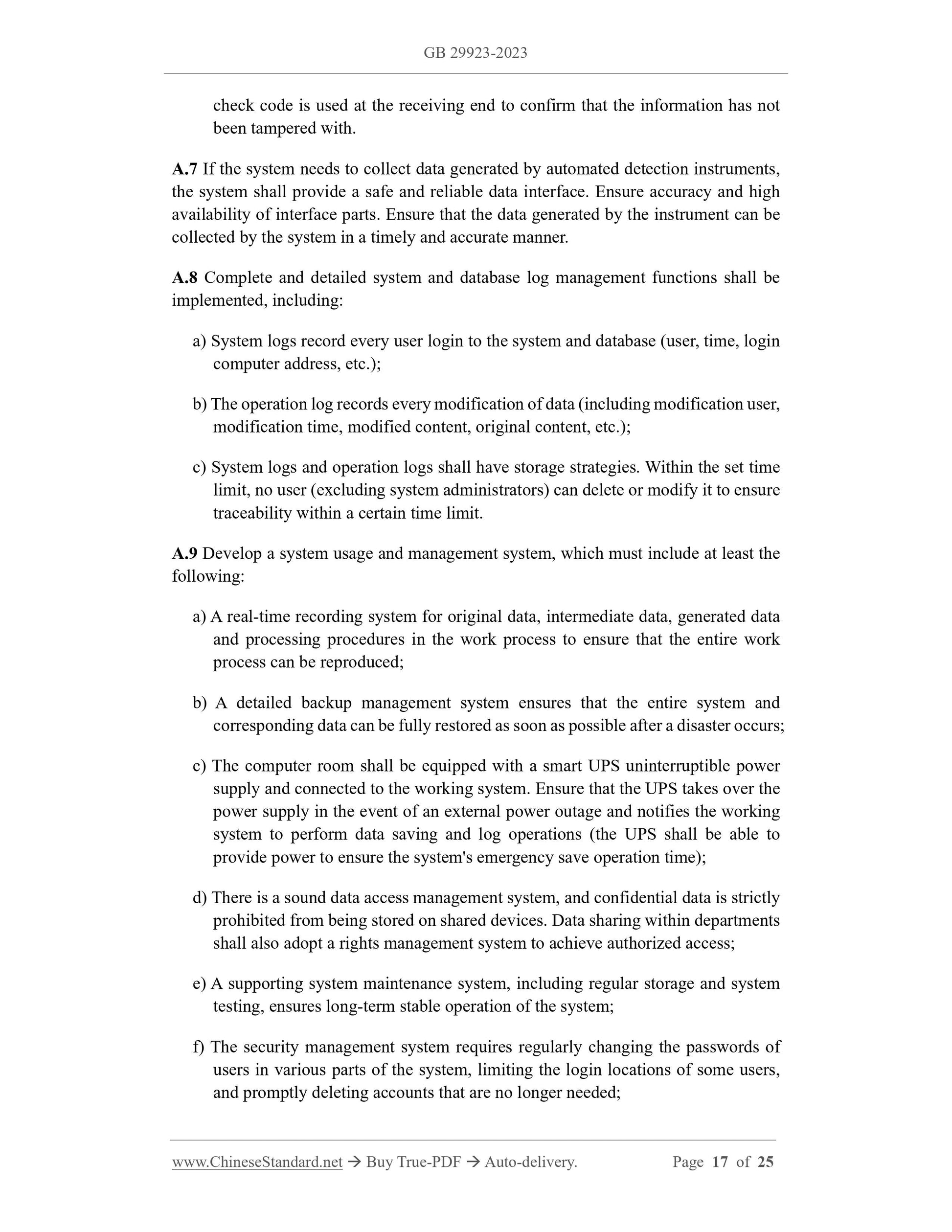1
/
of
12
www.ChineseStandard.us -- Field Test Asia Pte. Ltd.
GB 29923-2023 English PDF
GB 29923-2023 English PDF
Regular price
$260.00
Regular price
Sale price
$260.00
Unit price
/
per
Shipping calculated at checkout.
Couldn't load pickup availability
GB 29923-2023: National food safety standard - Good manufacturing practice for formula food for special medical use
Delivery: 9 seconds. Download (and Email) true-PDF + Invoice.Get Quotation: Click GB 29923-2023 (Self-service in 1-minute)
Newer / historical versions: GB 29923-2023
Preview True-PDF
Scope
This Standard specifies the basic requirements and management guidelines for sites,facilities, and personnel in the production process of formula foods for special medical
purposes such as raw material procurement, processing, packaging, storage, and
transportation.
This Standard applies to the production of formula foods for special medical purposes.
Basic Data
| Standard ID | GB 29923-2023 (GB29923-2023) |
| Description (Translated English) | National food safety standard - General rules for verification of microbial test methods |
| Sector / Industry | National Standard |
| Classification of Chinese Standard | X09 |
| Word Count Estimation | 15,149 |
| Date of Issue | 2023-09-06 |
| Date of Implementation | 2024-09-06 |
| Issuing agency(ies) | National Health Commission of the People's Republic of China, State Administration for Market Regulation |
| Summary | This standard specifies the general requirements for the verification of microbiological testing methods for national food safety standards. This standard is applicable to the verification process during the development and revision of national food safety standard microbiological inspection methods. |
Share
